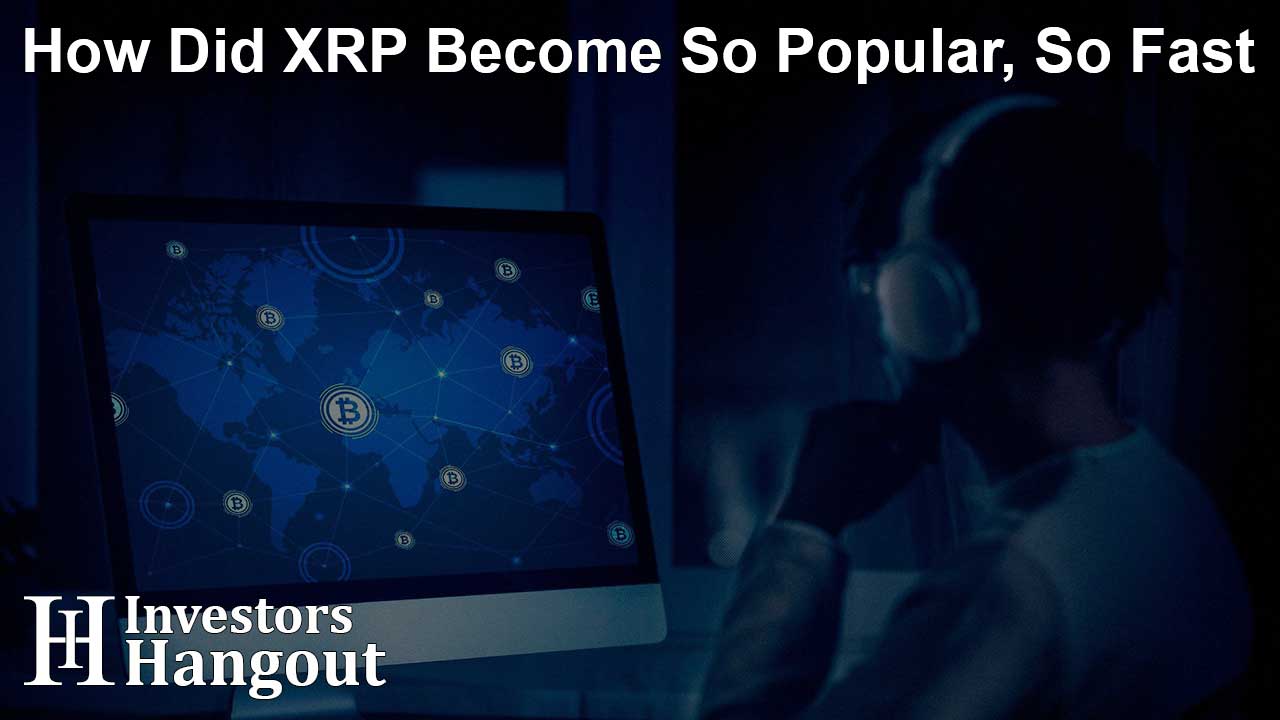As days pass, cryptocurrencies emerge at an unprecedented pace, shifting the global financial landscape through countless opportunities for decentralization and economic inclusion. Data from the most significant gainers in the industry suggests that the number of cryptocurrencies currently stands at 16,988, with ever-changing percentages, volumes, open interests, and daily charts. The key point is that adoption is growing, although a considerable portion of the population has yet to embrace cryptocurrencies, with some being hesitant or even opposed.
Let’s focus on what matters: the opportunities. From everyday payments to alternative investment options, the versatility of cryptocurrencies has significantly reshaped the way we think about money, allowing people from developing nations to participate in the digital economy, even without access to traditional banking infrastructure. Take XRP, for example. The prominent cryptocurrency of the Ripple network, which has faced a complex legal battle, has still carved out a niche in digital currencies, becoming the preferred option for cross-border payments, with XRP price USD as a mainstream discussion. The factors contributing to its success typically include speed, cost-effectiveness, and scalability. But that’s not all. To find out what made XRP become a leading cryptocurrency, keep reading.
The Origin Story Of XRP And The Regulatory Challenges It Overcame
It all started in the early 2010s, when, in case you didn’t know, Bitcoin began to gain momentum as a new alternative to decentralized digital currency. Bitcoin’s success has inspired a group of visionary developers, daring them to believe there’s still a better way to elevate fast and scalable digital payments. Before XRP, as we know it today, however, there was RipplePay, an idea that, although it never impressed the masses, served as a conceptual foundation for what would become XRP in the future. When Jed McCaleb, the founder of Mt. Gox stepped in, he didn’t come unprepared, or at least unprepared. He had vision, but if it weren’t for the two skilled engineers he brought on board, David Schwartz and Arthur Britto, perhaps XRP Ledger would have had trouble becoming this faster and efficient alternative to the traditional banking system.
In August 2012, the vision became palpable. There was a total supply of 100 billion XRP, all created simultaneously.
If only it had been that simple. Unfortunately, despite the waves XRP has made across markets, Ripple Labs wasn’t free from proactive regulatory scrutiny. In December 2020, the SEC (the US Securities and Exchange Commission) sued Ripple, an action that has tarnished its reputation ever since. Furthermore, the SEC has referred to XRP as an unregistered security, implying that Ripple Labs has allegedly leveraged XRP sales to raise funds without proper registration. As you can imagine, the lawsuit implied further consequences, causing XRP’s price to decrease tremendously, with a significant number of exchanges delisting the token from their list of options. It wasn’t until 2023 that XRP experienced a partial victory, established by a US court as not a security when it was launched and sold on secondary markets.
Factors Contributing To XRP’s Popularity
The Technology Behind XRP
XRP is powered by a consensus protocol that is significantly different from the traditional PoW (proof-of-work) and PoS (proof-of-stake) mechanisms, operating on an independent network that finalizes consensus cycles every 3 to 5 seconds. Furthermore, it handles around 1,500 transactions per second, which may sound like just a few numbers, perhaps the basic standard, when not considering the speed of other currencies. However, it is not just a few numbers, considering Bitcoin handles seven transactions per second, while Ethereum handles 15.
XRP makes an excellent fit for investors who prefer both small and high-volume transfers, for its fees count for just $0.0002 per transaction. Thus, the capacity of XRP to handle tens to thousands of payments simultaneously is undeniable. Still, we should emphasize how XRP functions as a bridge currency in RippleNet, significantly reducing costs and accelerating conversions.
XRP And Its Financial Partnerships
The widespread adoption of XRP in financial institutions is undoubtedly bolstered by the partnerships/collaborations it has been involved in so far, all of which have occurred through RippleNet and ODL (On-Demand Liquidity) solutions. Relevant collaborations of XRP include:
-
SBI Remit, a popular Japanese money transfer service, has invested heavily in Ripple, resulting in a 28% increase in Ripple mobile app payments.
-
American Express and Santander have partnered with Ripple, utilizing its blockchain technology for cross-border business-to-business payments, particularly between the US and the UK.
-
Bank of America and Euro Exim Bank have both adopted Ripple’s technology, which, by extension, includes the XRP cryptocurrency, fully acknowledging its potential to improve efficiency and reduce costs associated with international transactions.
-
MoneyGram has played a significant part in piloting XRP for cross-border payments. Unfortunately, the lawsuit filed by the SEC against Ripple, which we’ve discussed, has caused this partnership to be suspended, influencing MoneyGram to shift its focus to other areas and cryptocurrencies.
Real-World Applications Of XRP
XRP, the renowned cryptocurrency of Ripple Labs, has emerged as a solution for various aspects of global finance. Besides cross-broader payments, a feature we’ve already recognized as innate for XRP, relevant examples include:
-
Micropayments: Due to its low fees and fast times, XRP stands as an ideal cryptocurrency for frequent payments, including those in content creation, online tipping, and game purchases.
-
Tokenization: XRP empowers developers to create stablecoins, NFTs, and other tokenized assets, all through a fast, secure, and scalable infrastructure.
-
Liquidity Provision: When it comes to trading tokenized assets, XRP plays a fundamental role in providing liquidity, fostering a seamless process that is free from the need for funded accounts across different countries.
Overall, XRP holds tremendous potential, particularly in areas that prioritize speed, low cost, and scalability. Critics are confident in its potential to skyrocket, highlighting, however, how it all depends on market conditions, adoption, and regulatory factors.
About The Author
Contact Logan Wright privately here. Or send an email with ATTN: Logan Wright as the subject to contact@investorshangout.com.
About Investors Hangout
Investors Hangout is a leading online stock forum for financial discussion and learning, offering a wide range of free tools and resources. It draws in traders of all levels, who exchange market knowledge, investigate trading tactics, and keep an eye on industry developments in real time. Featuring financial articles, stock message boards, quotes, charts, company profiles, and live news updates. Through cooperative learning and a wealth of informational resources, it helps users from novices creating their first portfolios to experts honing their techniques. Join Investors Hangout today: https://investorshangout.com/

